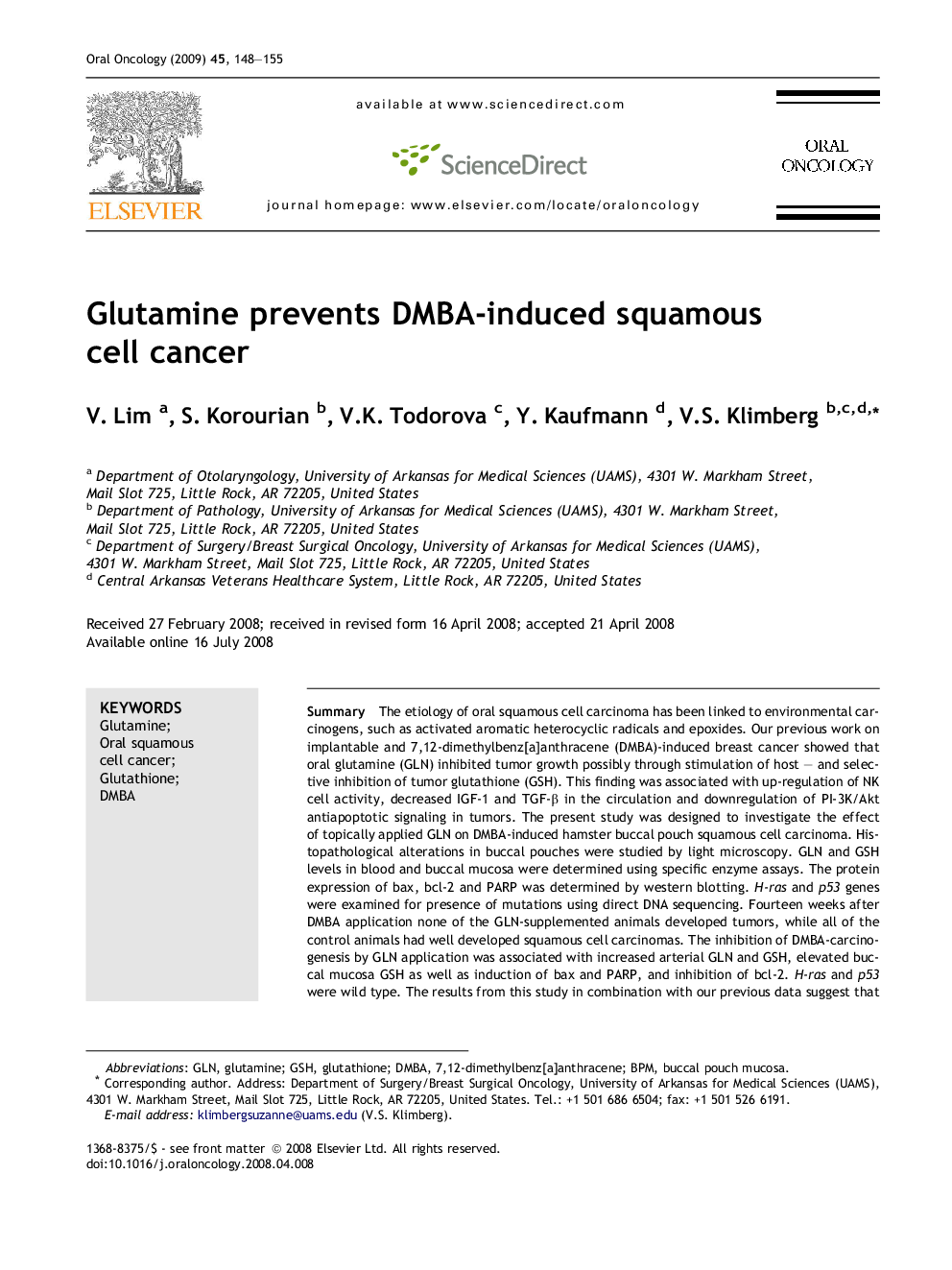| Article ID | Journal | Published Year | Pages | File Type |
|---|---|---|---|---|
| 3165474 | Oral Oncology | 2009 | 8 Pages |
SummaryThe etiology of oral squamous cell carcinoma has been linked to environmental carcinogens, such as activated aromatic heterocyclic radicals and epoxides. Our previous work on implantable and 7,12-dimethylbenz[a]anthracene (DMBA)-induced breast cancer showed that oral glutamine (GLN) inhibited tumor growth possibly through stimulation of host – and selective inhibition of tumor glutathione (GSH). This finding was associated with up-regulation of NK cell activity, decreased IGF-1 and TGF-β in the circulation and downregulation of PI-3K/Akt antiapoptotic signaling in tumors. The present study was designed to investigate the effect of topically applied GLN on DMBA-induced hamster buccal pouch squamous cell carcinoma. Histopathological alterations in buccal pouches were studied by light microscopy. GLN and GSH levels in blood and buccal mucosa were determined using specific enzyme assays. The protein expression of bax, bcl-2 and PARP was determined by western blotting. H-ras and p53 genes were examined for presence of mutations using direct DNA sequencing. Fourteen weeks after DMBA application none of the GLN-supplemented animals developed tumors, while all of the control animals had well developed squamous cell carcinomas. The inhibition of DMBA-carcinogenesis by GLN application was associated with increased arterial GLN and GSH, elevated buccal mucosa GSH as well as induction of bax and PARP, and inhibition of bcl-2. H-ras and p53 were wild type. The results from this study in combination with our previous data suggest that the chemopreventive effects of GLN are exerted by enhancing the antioxidant status of the body and activation of apoptosis.
